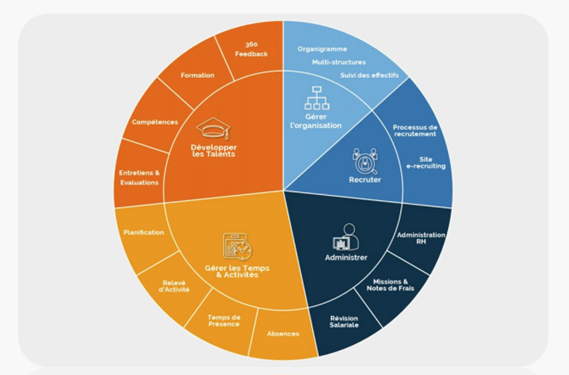#Digital
#Services IT

25/02/2025
Data digitalization is a priority for many companies, especially in the field of HR. Beyond simplifying processes, digitalization enables the automation of repetitive tasks while improving information management and reducing costs. All of this is done with the aim of upholding corporate social responsibility objectives.
In this webinar, Christel Marguillard, SIRH Director at Microtis, and Cindy Phonsavane, Territory Manager Belux at Rise Up, discussed the evolution of the HR function and the tools that will help companies navigate this transformation under optimal conditions.
The digitalization of Human Resources encompasses all processes aimed at dematerializing practices into specialized digital tools. This action offers several advantages:
Today, 74% of companies consider digitization an absolute priority. 90% of them plan to invest in HR-related technologies in the coming years.
The acceleration of digital transformation, further driven by the Covid-19 pandemic, has compelled companies to adapt rapidly, including implementing remote work solutions.
In response to this situation, information technologies had to quickly evolve to enable companies to simplify their remote work processes while maintaining service quality. This is why new, more sophisticated management solutions such as CRM, video conferencing, project management, and mobile applications have emerged.
Nowadays, employees expect their employers to provide modern equipment and tools to facilitate their work and increase productivity. This includes the use of collaborative software, process automation, and artificial intelligence. Moreover, Generation Z, heavily reliant on mobile technologies, desires greater work flexibility, the use of mobile apps and social networks in place of email or phone, and continuous training.
The Human Resources Information System (HRIS), such as the Gesper range by Microtis, encompasses various software solutions designed to manage different aspects of the HR department. An HRIS consists of multiple modules, each of which covers a specific HR activity. Every company has the flexibility to create its own system tailored to its needs and priorities.
An HRIS can be described in five different categories:

HRIS is evolving rapidly, driven by both business needs and local or industry-specific regulations. The major trends primarily focus on automation and enhancing the user experience:
In conclusion, HRIS solutions aim to streamline processes, enhance the user experience, and optimize talent management. Microtis’ HRIS is tailored to the Luxembourg market and consists of several software modules (payroll, personnel management, training and recruitment, performance evaluation). The front-office or “self-service” component allows employees to access their information and documents, request leave or remote work, and make changes to personal data. Microtis’ Gesper range is customizable and scalable according to each company’s HR needs and maturity.
Known and appreciated in the professional world, the Rise Up platform (associated with Microtis) enables employees of a company to take recommended or mandatory training courses as directed by their management, in order to keep their job-related skills up to date. By digitizing its training program, this allows:
The goal of Rise Up is not to replace humans but to strike a balance between different learning modalities (in-person and remote).
As you can see, the digitalization of Human Resources is a crucial point in managing a company, and HRIS tools are indispensable for managing our talents.
Want to learn more ?